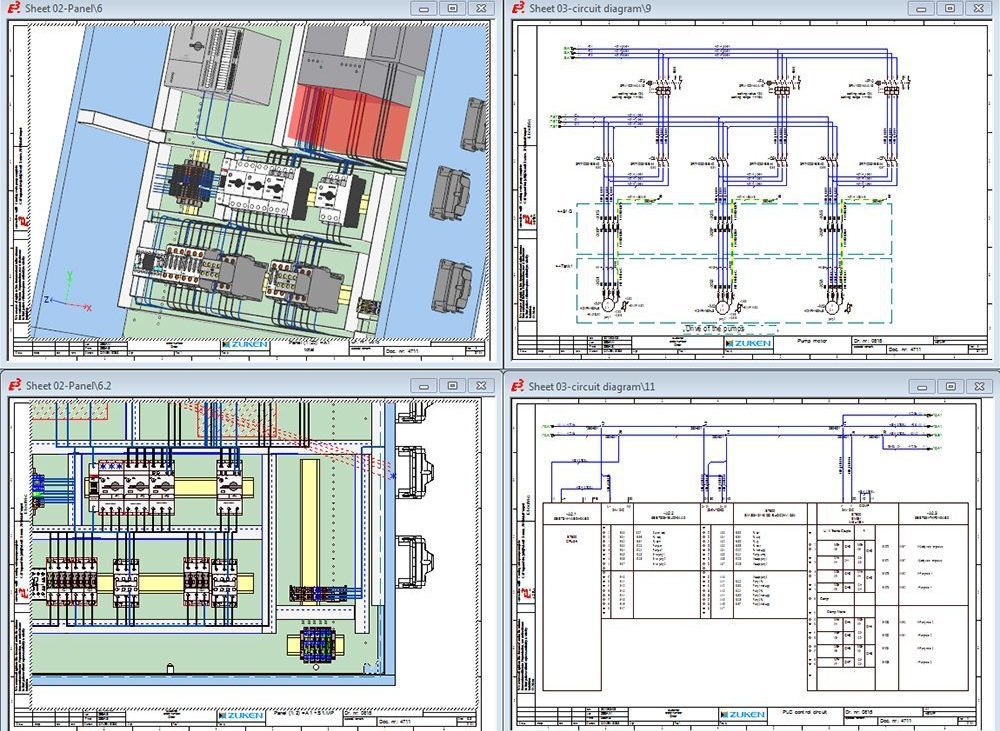Precise Electrical Load Calculation Services for Commercial and Industrial Buildings
Precise Electrical Load Calculation Services for Commercial and Industrial Buildings
Blog Article
Cutting-edge Electrical Design Providers for Modern Infrastructure
As city environments grow significantly complicated, including modern technologies such as smart grids and eco-friendly energy sources becomes extremely important. These innovations not only guarantee to enhance energy consumption yet additionally foster strength against future demands.
Significance of Cutting-edge Electrical Design
Innovative electrical design plays an important duty in modern infrastructure, influencing not just performance however also sustainability. As cities develop and the demand for energy boosts, the need for advanced electrical systems becomes extremely important. These systems should not only meet existing demands yet also anticipate future growth and technical improvements.
A well-executed electrical design can dramatically minimize power usage, consequently decreasing operational prices and minimizing ecological effect. By incorporating renewable energy resources, such as photovoltaic panels and wind turbines, cutting-edge designs can boost energy freedom and resilience. Smart grid innovations permit for real-time monitoring and management of power circulation, enhancing performance and reducing waste.
Safety and security is an additional critical element of electric design. Executing extensive standards and innovative innovations can minimize dangers connected with electric failures, making sure a safe and secure environment for companies and homeowners alike. In addition, innovative designs assist in flexibility, allowing frameworks to incorporate arising technologies perfectly.
Secret Fads in Electrical Design
As the landscape of electrical design proceeds to progress, a number of vital patterns are shaping the future of the market. One considerable trend is the integration of smart innovation into electric systems. The expansion of the Internet of Points (IoT) has actually made it possible for real-time surveillance and control of electrical tools, enhancing performance and promoting predictive upkeep.
Another fad is the expanding focus on modular design. This approach enables versatile and scalable remedies, allowing framework to adapt to changing needs without extensive restorations. Furthermore, the use of sophisticated simulation devices and Building Details Modeling (BIM) is becoming significantly prevalent, improving the design process and enhancing cooperation amongst stakeholders.
Furthermore, advancements in products scientific research are bring about the advancement of lighter, much more resilient, and energy-efficient parts. This development is particularly essential for high-performance structures and framework tasks.
Lastly, there is a marked shift in the direction of data-driven decision-making - residential electrical design. Leveraging data analytics assists developers optimize systems for performance and cost-effectiveness. Together, these fads indicate a transformative age in electric design, boosting capability, sustainability, and durability in modern-day infrastructure
Lasting Energy Solutions
Sustainable power services are increasingly becoming an important focus in electrical design, mirroring a wider dedication to ecological duty and source performance. These solutions intend to lessen environmental impact while optimizing power intake in various facilities, from residential buildings to big business centers.
Among the foremost techniques includes the assimilation of sustainable energy sources, such as solar panels and wind turbines, right into electric systems. This not just decreases reliance on fossil fuels however additionally boosts energy durability. Additionally, ingenious energy storage space systems, such as advanced batteries, allow efficient monitoring and distribution of power, guaranteeing that surplus energy created during height production can be used throughout high need durations.
In addition, energy-efficient design methods are being adopted to improve overall system performance. This includes using energy-efficient lighting, cooling and heating systems, and wise structure technologies that adjust and keep an eye on power use based upon tenancy and environmental problems.
Smart Grid Technologies
The application of sustainable power solutions naturally results in the expedition of wise grid technologies, which play a pivotal role in improving electric systems. Smart grids take advantage of progressed communication modern technologies and information analytics to boost the dependability, efficiency, and sustainability of electricity circulation. By incorporating electronic technology with typical grid infrastructure, these systems assist in real-time monitoring, automated control, and improved decision-making capabilities.
One of the crucial features of wise grids is their capability to suit renewable resource sources, such as solar and wind power. This versatility not just decreases reliance on fossil fuels yet additionally allows for a more decentralized energy manufacturing model. Clever grids make it possible for need feedback programs, where consumers can readjust their power usage based on real-time rates, therefore advertising power preservation and reducing peak lots needs.
Furthermore, smart grid innovations boost grid strength by enabling quicker identification and resolution of blackouts, eventually decreasing downtime. With predictive upkeep and analytics, energies can maximize procedures and improve solution distribution. As areas and cities proceed to advance, wise grid technologies are necessary for developing a effective and sustainable electric framework that satisfies the demands of modern society.

Future-Proofing Framework
To make sure long-lasting practicality and versatility, future-proofing infrastructure is essential in the quickly progressing landscape of electric design solutions. As technology advancements and energy needs change, it is vital that electrical systems are designed with adaptability in mind. This involves including scalable options that can suit future upgrades without demanding considerable overhauls.

Furthermore, sustainability must be a foundation of future-proofed styles. Making use of renewable resource resources, such as solar and wind, and enhancing power effectiveness reduce reliance on fossil gas, straightening with worldwide initiatives to deal with climate modification.
Verdict
Finally, cutting-edge electric see here design services play an essential duty in shaping contemporary infrastructure. By focusing on sustainability, flexibility, and efficiency, these solutions address the evolving needs of power systems. The assimilation of wise grid modern technologies and sustainable power remedies boosts resilience and lowers functional expenses. Future-proofing facilities with innovative simulation tools and modular techniques makes certain that electric systems remain receptive to altering requirements, inevitably adding to a much more sustainable and energy-independent future.
A well-executed electrical design can significantly minimize power intake, consequently reducing operational prices and minimizing ecological influence. By incorporating sustainable power resources, such as solar panels and wind generators, ingenious designs can boost power freedom and durability. In addition, ingenious energy storage systems, such as innovative batteries, allow efficient administration and distribution of energy, making sure that surplus power generated throughout height manufacturing can be used throughout high need periods.
Clever grids make it possible for demand response programs, where consumers can change their power usage based on real-time rates, thereby promoting energy conservation and decreasing peak load needs. (residential electrical design)
As technology developments and energy demands find here shift, it is important that electrical systems are developed with adaptability in mind.
Report this page